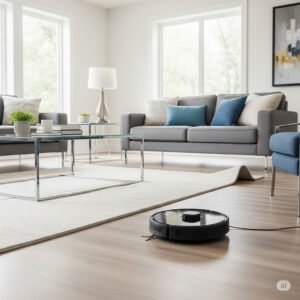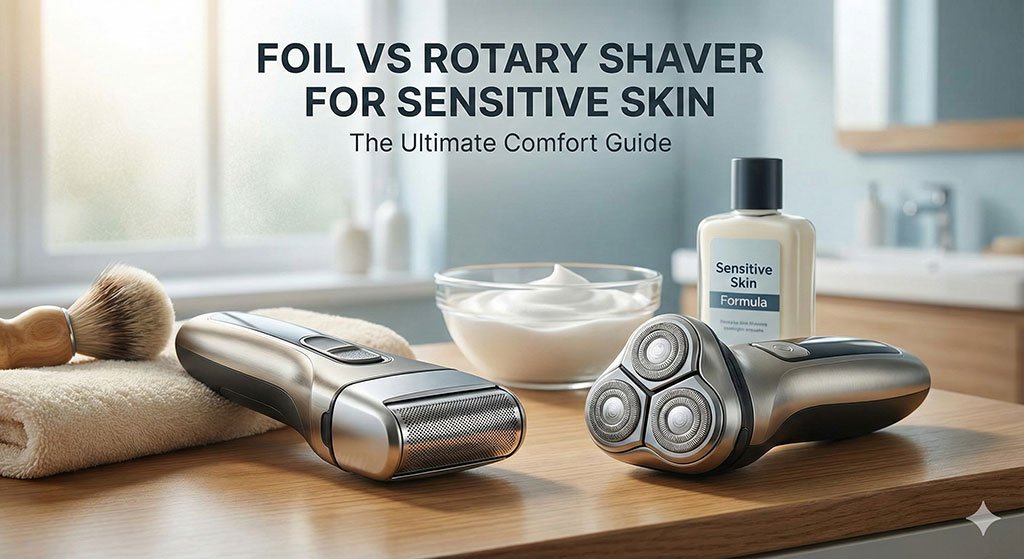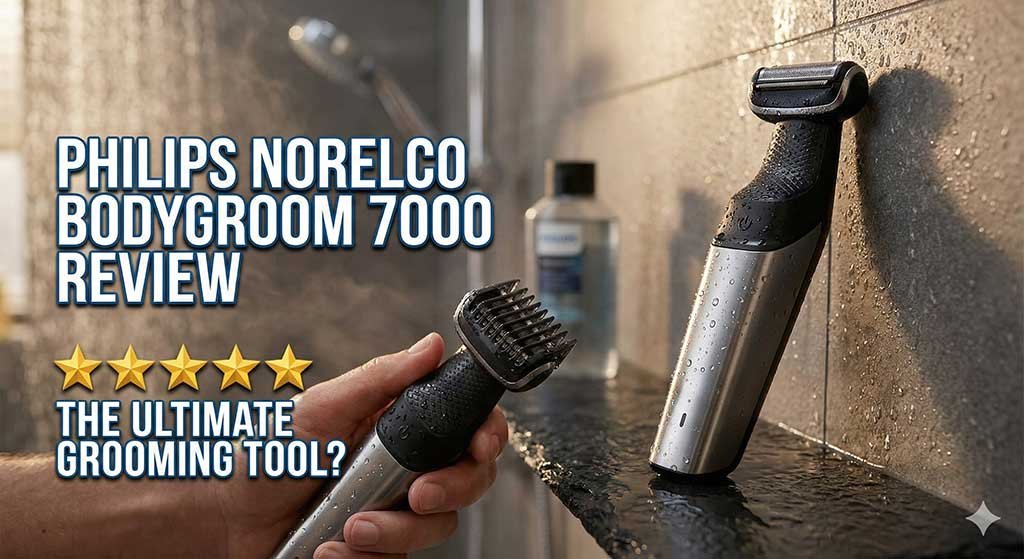Imagine coming home to consistently clean floors without lifting a finger. That’s the promise of a Roomba, offering unparalleled convenience and daily upkeep. However, these smart cleaning devices also come with their own set of considerations. From impressive autonomy to occasional navigation quirks, understanding the pros and cons of Roomba is key to deciding if it’s the right addition to your smart home.
In today’s fast-paced world, finding ways to automate household chores is a game-changer for many. Robot vacuums, particularly those from the popular Roomba line by iRobot, have emerged as a leading solution for maintaining clean floors with minimal effort. But are these high-tech helpers truly worth the investment? Let’s delve into a comprehensive analysis of the pros and cons of Roomba to help you make an informed decision. You will discover how these devices can transform your cleaning routine and where their limitations lie.

Table of Contents
Advantages: Why a Roomba Might Be Your Next Favorite Appliance
Owning a Roomba can bring significant benefits to your daily life. Consider these key advantages:
1. Unmatched Convenience and Time-Saving Automation
One of the most compelling reasons to invest in a Roomba is the sheer convenience it offers. You can schedule your Roomba to clean at specific times, whether you are at work, running errands, or simply relaxing. This means you can arrive home to consistently clean floors without having to lift a finger. This hands-free operation frees up your valuable time for more important or enjoyable activities.
2. Consistent Daily Cleaning and Allergen Reduction
Roombas excel at maintaining a consistent level of cleanliness. By running daily, they can effectively manage dust, pet hair, and debris before they accumulate. For individuals with allergies, this daily removal of allergens like dust mites and pet dander can significantly improve indoor air quality and reduce allergy symptoms. The constant upkeep prevents dirt from becoming deeply embedded in carpets or crevices.
3. Access to Hard-to-Reach Areas
Thanks to their compact, low-profile design, Roombas can navigate under furniture such as sofas, beds, and cabinets, reaching spots that traditional upright vacuums often miss. This capability ensures a more thorough clean throughout your home, preventing the buildup of dust bunnies and grime in those overlooked spaces.
4. Smart Features and Connectivity
Modern Roomba models are equipped with advanced features that enhance their effectiveness and ease of use. Many come with Wi-Fi connectivity, allowing you to control them via a smartphone app. Through the app, you can:
- Schedule cleanings
- View cleaning maps
- Set virtual walls or no-go zones
- Monitor battery life and cleaning status
- Receive maintenance alerts
Higher-end models often include sophisticated navigation and mapping technologies like vSLAM or LiDAR, which enable them to clean systematically and efficiently, remembering your home’s layout for future runs. Some even boast object recognition, allowing them to identify and avoid common obstacles like pet waste, charging cables, and shoes.
5. Effective on Various Floor Types
Roombas are designed to handle a variety of floor surfaces, adapting their suction and brush settings as they move from hardwood to tile to low-pile carpets and rugs. This versatility makes them suitable for homes with mixed flooring, ensuring a good clean across different areas.
6. Self-Emptying Capabilities (in some models)
Certain Roomba models come with a Clean Base Automatic Dirt Disposal system. After completing a cleaning cycle, the robot returns to its base and automatically empties its dustbin into an enclosed bag in the base. This feature can hold weeks or even months of debris, further reducing the frequency of manual interaction and providing an even more hands-free experience.
Disadvantages: Roomba’s Limitations
While the benefits are clear, Roombas are not without their drawbacks. It is important to consider these potential downsides:
1. Initial Cost and Ongoing Maintenance Expenses
Roomba devices, especially the more advanced models with smart features and self-emptying capabilities, can be a significant upfront investment. Beyond the initial purchase, there are ongoing costs for replacement parts such as filters, side brushes, and main brushes, which need to be changed periodically to maintain optimal performance. Batteries also have a finite lifespan and will eventually need replacing.
2. Not a Replacement for Deep Cleaning
While excellent for daily maintenance, Roombas typically lack the powerful suction and deep cleaning capabilities of full-sized, traditional vacuums. They may struggle with heavily soiled carpets, ground-in dirt, or large debris. For a truly deep clean or tackling significant messes, you will likely still need a conventional vacuum or manual cleaning.
3. Navigation and Obstacle Challenges
Despite advanced navigation, Roombas can sometimes get stuck on obstacles like loose cords, thick rugs with fringes, or small toys. They may also struggle with dark-colored floors or patterns that mimic cliffs, causing them to avoid those areas. While newer models are improving in this regard, “robot-proofing” your home (tidying up small items) is often necessary before a cleaning cycle.
4. Small Dustbin Capacity
Most Roomba models have relatively small dustbins compared to traditional vacuums. This means you will need to empty the bin frequently, especially if you have pets or a large home, unless you opt for a more expensive self-emptying model.
5. Noise Levels
While generally quieter than a full-sized upright vacuum, Roombas do produce noise during operation. If you are sensitive to noise or plan to run the vacuum while working or sleeping, this could be a consideration. Self-emptying docks can also be quite loud during the emptying process.
6. Battery Life Limitations
Roomba battery life varies by model, but even the best models have a finite run time before needing to return to their charging dock. For larger homes, the Roomba might need to pause cleaning to recharge mid-cycle, extending the total cleaning time. Over time, battery performance can degrade, requiring replacement.
7. Privacy Concerns
Some advanced Roomba models feature onboard cameras for navigation and object recognition. While manufacturers like iRobot state that privacy is a priority and images are primarily used for AI training with user consent or in controlled environments, the idea of a device mapping and potentially capturing images within your home can raise privacy concerns for some users. It is crucial to understand how your data is collected and used.
Comparing Roomba Models: Features at a Glance
Roomba offers various models, each with different features and price points. Here’s a simplified look at how some features might vary:
Feature/Model Type | Entry-Level (e.g., 600 Series) | Mid-Range (e.g., i Series) | High-End (e.g., j/s Series) |
Navigation | Random/Basic Pattern | Imprint Smart Mapping | PrecisionVision/LiDAR |
App Control | Basic Scheduling | Advanced Scheduling, Zones | Advanced Mapping, Object Avoidance |
Self-Emptying | No | Optional (with + models) | Standard (with + models) |
Suction Power | Standard | Enhanced | Max Power Lifting Suction |
Ideal For | Smaller homes, daily upkeep | Mid-sized homes, pets | Large homes, complex layouts, pet owners |
Is Roomba Right for You? Key Considerations
Deciding if a Roomba is a worth while investment depends largely on your specific needs and lifestyle.
- Your Home Size and Layout: For smaller apartments or homes with open layouts, even basic Roomba models can be highly effective. Larger homes or those with complex floor plans will benefit more from advanced models with sophisticated mapping.
- Presence of Pets: If you have shedding pets, a Roomba can be invaluable for daily hair control. Look for models designed specifically for pet hair with multi-surface rubber brushes.
- Your Budget: Determine how much you are willing to spend, considering both the initial cost and potential long-term maintenance.
- Your Cleaning Expectations: Understand that a Roomba is an excellent supplement to, but generally not a full replacement for, traditional vacuuming or deep cleaning.
- Your Tech Comfort Level: While generally user-friendly, some advanced features might appeal more to tech-savvy individuals.
FAQ
For optimal cleanliness, especially if you have pets or allergies, running your Roomba daily or every other day is recommended. This prevents dirt and debris from building up, making each cleaning cycle more effective.
No. Roombas are designed for dry vacuuming. Running over liquid spills or pet accidents can damage the robot and spread the mess. For liquid messes, you would need a robot mop like the Braava jet. Newer Roomba models with advanced object avoidance can recognize and avoid pet waste.
Generally, yes. While Roombas are excellent for daily maintenance and light cleaning, a traditional vacuum cleaner offers stronger suction for deep cleaning carpets, upholstery, and hard-to-reach spots that the Roomba cannot access, like stairs or vertical surfaces.
Regular maintenance is crucial for your Roomba’s longevity and performance. This includes emptying the dustbin after each use (or less frequently with a self-emptying base), cleaning the brushes and filters weekly, and wiping down sensors periodically. Consult your specific model’s manual for detailed maintenance schedules and tips.
Roombas produce varying levels of noise depending on the model and the surface they are cleaning. While generally quieter than traditional upright vacuums, they are not silent. The self-emptying process in models with Clean Bases can also be quite noisy for a short duration.
Bottom Line
The pros and cons of Roomba reveal a powerful tool for modern home maintenance. While the convenience, time-saving, and consistent daily cleaning are undeniable advantages, considerations like cost, deep cleaning limitations, and potential navigation quirks exist. Ultimately, a Roomba is a fantastic investment for those seeking to reduce their manual cleaning burden and maintain a consistently tidy home, serving as an excellent complement to your existing cleaning routine.



